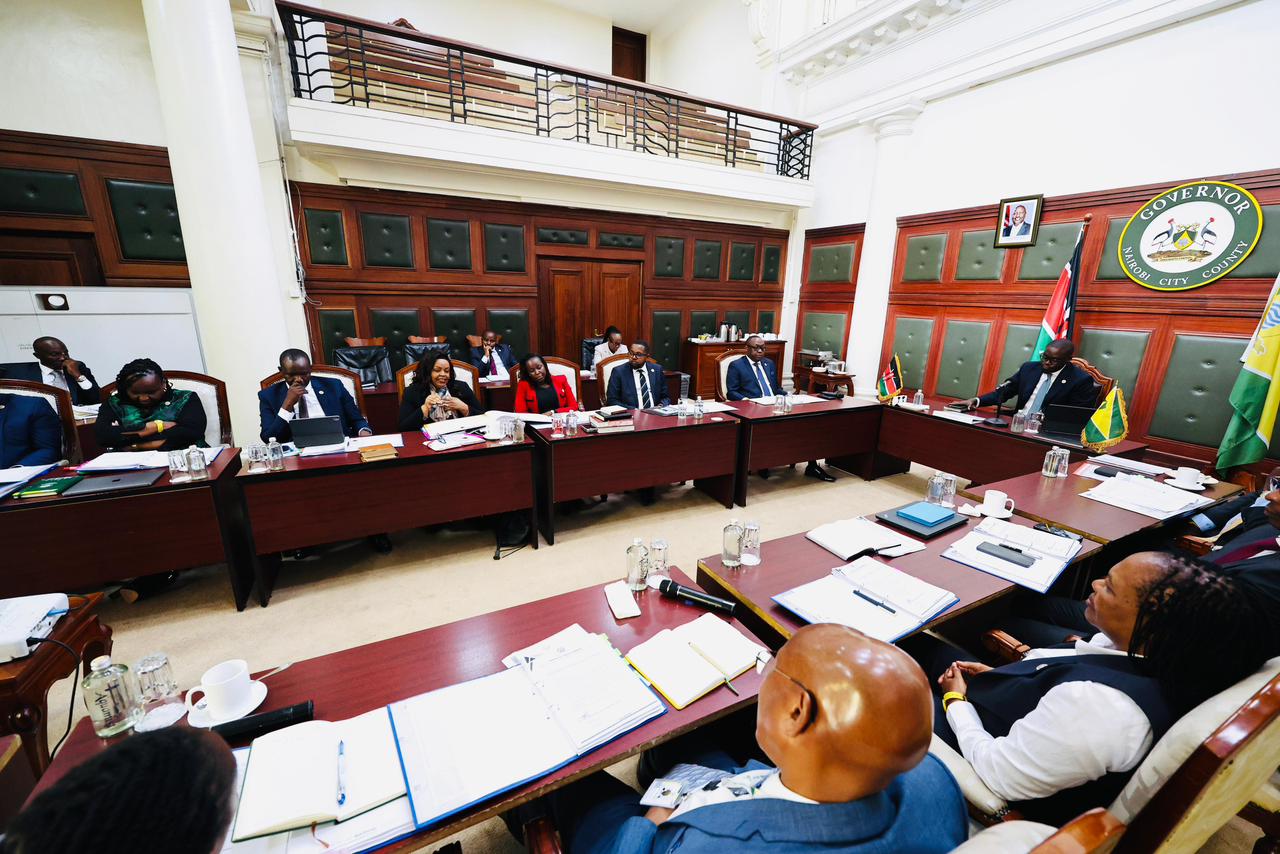

The Nairobi City County Cabinet has approved the
Regularization of Unauthorised Developments Regulations, 2025, setting the
stage for a transparent, fair, and people-centred process to bring informal
buildings into compliance with planning and safety laws.
The Cabinet meeting, chaired by Governor Johnson Sakaja,
considered and endorsed the formulation of the regulations for publication and
transmission to the Nairobi City County Assembly, pursuant to the Nairobi City County
Regularization of Unauthorised Developments Act, 2025.
According to an official Cabinet dispatch, “The Regulations
operationalise the Act by setting out the end-to-end process for applications,
technical standards, professional accountability, public participation, dispute
resolution, and enforcement.”
The dispatch further explained the significance of the
framework, noting:
“Nairobi’s growth has too often been informal, leaving
families, small businesses, and entire neighbourhoods exposed to risk, unsafe
structures, poor access, and constant fear of evictions. This framework
replaces anxiety with a fair, rules-based pathway into the formal planning
system, prioritising structural safety, public health, environmental
stewardship, and community voice, while protecting livelihoods.”
The move comes just two days after Governor Sakaja urged
residents to take advantage of the ongoing grace period to comply before
enforcement begins.
“If you know you have an unapproved building, this is your
last opportunity to comply. Once the grace period is over, enforcement will
follow. It’s not about revenue — it’s about order, safety, and accountability,”
Governor Sakaja said during a briefing earlier this week.
He added that the initiative aims to “replace fear and
uncertainty with order, safety, and dignity,” particularly for residents and
small businesses that have long operated in informal developments.
“Every Nairobi resident deserves a safe home, a stable
business, and a county that treats them with dignity,” Sakaja emphasized.
The newly approved regulations introduce a structured process through which residents and developers can legalize previously unapproved buildings.
The framework focuses on compliance with safety, public
health, and environmental standards, ensuring that no regularized structure
compromises the well-being of Nairobians.
It also provides for public participation and accessible
dispute-resolution mechanisms, reinforcing transparency and accountability.
Built-environment professionals will be held responsible for
the integrity of all submissions and remedial works undertaken during the
process.
Additionally, the framework integrates informal areas into
formal urban planning, ensuring that all wards in Nairobi enjoy equal rights,
safety, and access to services.
Governor Sakaja confirmed that targeted enforcement will
follow for those who fail to meet safety standards or obstruct public spaces.
“We are giving every
developer a fair chance to comply,” he said, adding that enforcement will be
guided by fairness and a focus on protecting lives and restoring order in the
city.
To promote transparency, the county government plans to
launch a real-time online dashboard that will allow Nairobi residents to track
applications, approvals, and safety improvements.
With this framework, the Sakaja administration aims to shift
Nairobi’s urban growth from informal and unregulated to structured and safe —
creating a capital city where compliance safeguards both lives and livelihoods.













